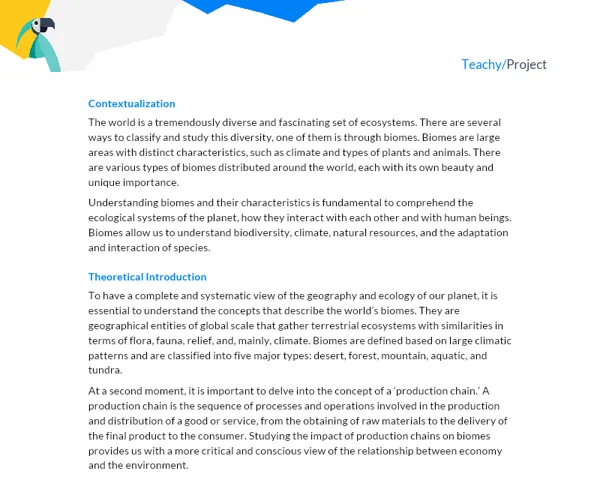Context
Tectonic plates are huge blocks that make up the outermost solid layer of the Earth, floating on a "sea" of deeper and hotter molten rocks. These plates are not static but are constantly moving, no matter how slow these movements may be. Think of the Earth's surface as a puzzle, where each piece is a tectonic plate. The study of such plates and their movements is of paramount importance in the discipline of Geography, as they are responsible for various geological phenomena that occur on our planet.
The movement of tectonic plates can result in three types of boundaries: convergent, divergent, and transform. Convergent boundaries occur when two plates move towards each other, causing a collision. Divergent boundaries occur when two plates move away from each other, forming a rift zone. Finally, transform boundaries occur when two plates slide past each other.
Now, you might be wondering, what do these movements have to do with our daily lives? A lot! If we stop to think, these tectonic movements shape the world we live in, forming mountains, volcanoes, and even large oceanic trenches. In addition, earthquakes and tsunamis are direct results of the movement of these plates. They also influence the distribution of minerals and fossil fuels and even the evolution of life on Earth.
To deepen your studies and knowledge, we recommend using the material provided by the Brasil Escola website, Portal GEA, and also the BBC documentary on Tectonic Plates, available on YouTube. These resources, besides being reliable, are rich in information that will help you better understand this fascinating subject.
Practical Activity: "Recreating the Movements of Tectonic Plates"
Project Objective
Demonstrate in a practical and playful way the movement of tectonic plates and their consequences, such as the formation of earthquakes, volcanoes, mountains, and oceanic abysses.
Detailed Project Description
Divided into groups of 3 to 5 members, students will build a simplified three-dimensional model that will represent the movement of tectonic plates. The model is not intended to be a faithful portrait of reality but to demonstrate in a simplified and easy-to-understand way the concepts of tectonic plates, their movements, and their consequences. After assembling the model, students should present a simple enactment using the constructed model to represent the different types of movements of tectonic plates (convergent, divergent, and transform) and their consequences. Finally, students should write a report detailing the entire process, from the initial research, through the model assembly, to the final enactment.
Required Materials
- 2 styrofoam trays (or similar material) to represent the tectonic plates
- Colored pencils or paint
- Modeling clay or clay
- Scissors
- White glue
- Barbecue sticks
Detailed Step-by-Step for Activity Execution
-
Initial Research: The first step of the work requires in-depth research and study on the movement of tectonic plates and their consequences. Use the resources suggested in the introduction, as well as books and other reliable materials.
-
Model Construction: With the styrofoam trays, students will cut out and paint two tectonic plates.
-
Setting up the Scene: The group should then model mountains, volcanoes, and oceanic trenches with clay, representing the different types of consequences of plate movement, and stick them on the styrofoam plates.
-
Enactment: With the scene ready, it's time for the enactment. The group should move the styrofoam plates in a way that demonstrates the three different types of movements (convergent, divergent, and transform) and their consequences, explaining what is happening as they make the movements.
-
Report Writing: After building the model and the enactment, the group should write a report detailing the entire process, from the initial research, model construction, enactment, and everything they learned during the project. The report should be divided into four parts: Introduction, Development, Conclusions, and Bibliography. The Introduction should provide a contextualization of the theme, its relevance, and the work's objective. In the Development, the group should explain the theory of tectonic plate movement, describe in detail the activity carried out, and discuss the results obtained. In the Conclusion, the group should revisit the main points discussed in the work, highlight the learnings obtained, and the conclusions drawn. Finally, the group should present the Bibliography, indicating all sources used for the work.
Project Deliverables
At the end of the activity, each group must deliver the created model and a digital written report with a minimum of 5 pages. The evaluation will take into account the theoretical understanding of the topic, the execution of the practical activity, and the quality of the report delivered.

